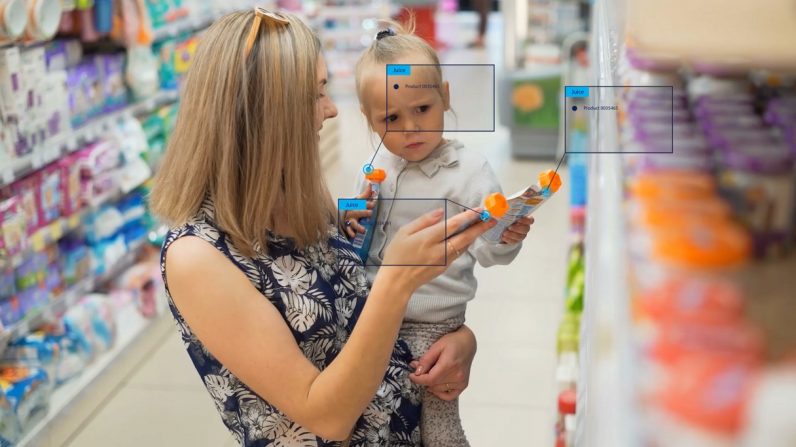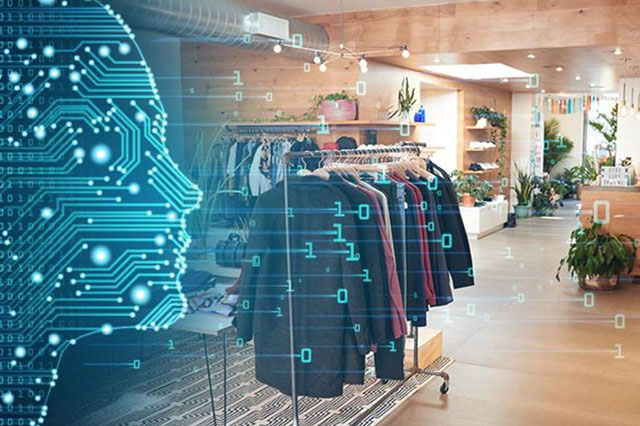What would your Sunday morning dash to Waitrose or your Monday morning coffee in Pret look like as data? To have these personal, physical journeys mapped and understood would be goldust to retailers. Of course, all our consumer journeys online are already tracked, computed and turned into actionable data already so the next logical step is to apply this technology to the real-world.
It is well documented that Bricks n’ Mortar is not doing so well. According to PwC a record net 2,481 stores disappeared from the UK’s top 500 high streets in 2018 – 40% more than in 2017 – a worrying statistic for the future of the high street. Now, more than ever, retailers need to understand their customers physical journey through the store and get some much-needed insight into customer patterns to understand what is working and what is not.

AI technology can help by applying a sort of Google Analytics to the real world. Working with brands, this technology provides companies with a much-needed picture of customer journey instore- making trends like customer loyalty, foot traffic depending on locations/markets, demographics of customers and even customer emotions measurable. Of course, once this data is tracked it can then turn into actionable information that can make the difference between a purchase or not. It’s about who, what, where, why and how people are shopping physically and crucially will help brands understand how their performances measure up to their competitors.
Some of the ways this AI data collection can manifest as real solutions are:
• Camera systems can detect the “fresh” status of perishable products before on-site employees and the machine learning technology can reorder supplies without need for any manual operation.
• Camera technology can also work alongside an AI platform to monitor how long a customer has been in a certain aisle as a way to measure how marketing and placement is working best and with what demographics.
• Retailers can monitor wait times in checkout lines with camera and AI technology to understand store traffic and merchandising effectiveness at the individual store level—and then tailor assortments.
A mix of sensory technology and AI can be used to follow consumers as they journey through stores, gaining invaluable insight on what attractive products arrest attention or why bottlenecks in stores are occurring. By gathering this data, automatically and in real-time, on how customers are interacted with various areas of a store, brands can map and realign the customer experience.

According to Forbes, UK retailers have the potential to see a 0.5–1.0% increase in annual productivity growth if they start properly utilising their in-store data. But cost, a lack of analytical talent and siloed data within companies remain barriers to this sort of progression.
AI and machine learning can help scale the repetitive analytics tasks required to drive better leverage of the available in-store data. When deployed on a companywide, real-time analytics platform, they can become the single source of truth that all enterprise functions rely on to make better decisions.
So how will AI and machine learning change retail analytics, as they are currently understood? We expect that AI and machine learning won’t kill analytics as we know it, but give analytics a much needed and impactful makeover what will in drive the future of physical retail. In the future we could see:
• Analytics will increasingly focus on analysing manufacturing machine behaviour, not just business and consumer behaviour.
• Analytics will happen in real time and act as the glue between all areas of the business.
• Retailers will include machine learning algorithms as an additional factor in analysing and monitoring business outcomes in relation to machine learning algorithms.
• They will use AI and machine learning to sharpen analytic algorithms, detect more early warning signals, anticipate trends and have accurate answers before competitors do.

AI is a huge opportunity for retail and one that it shouldn’t waste any time in grabbing wholeheartedly. It is the key to understand who, why, how and what people are purchasing and with that knowledge comes profit, growth and accuracy. It is time for Google Analytics to get real.

